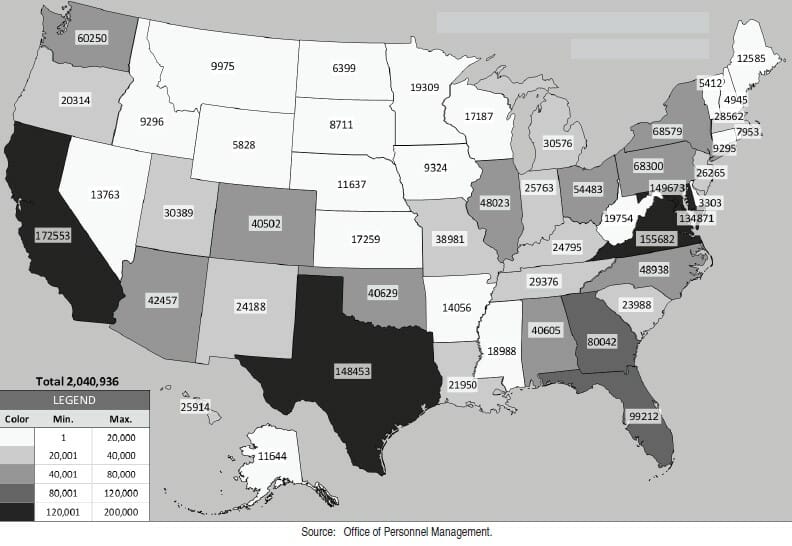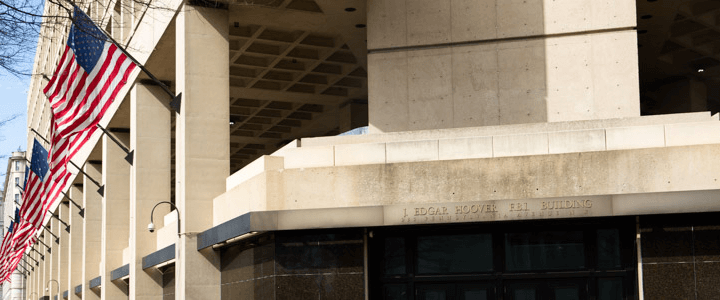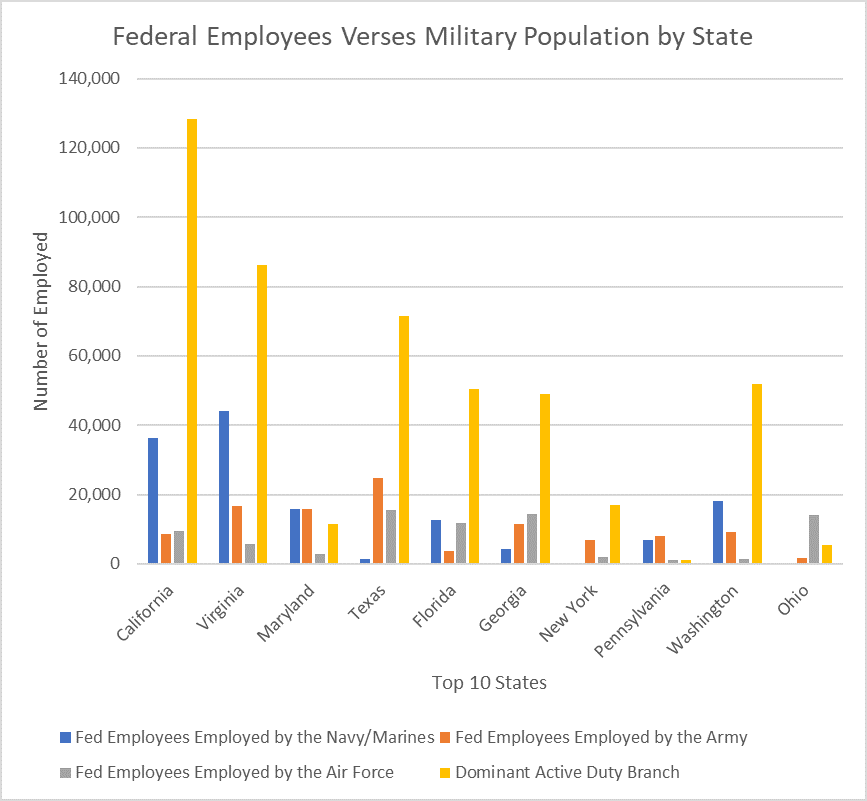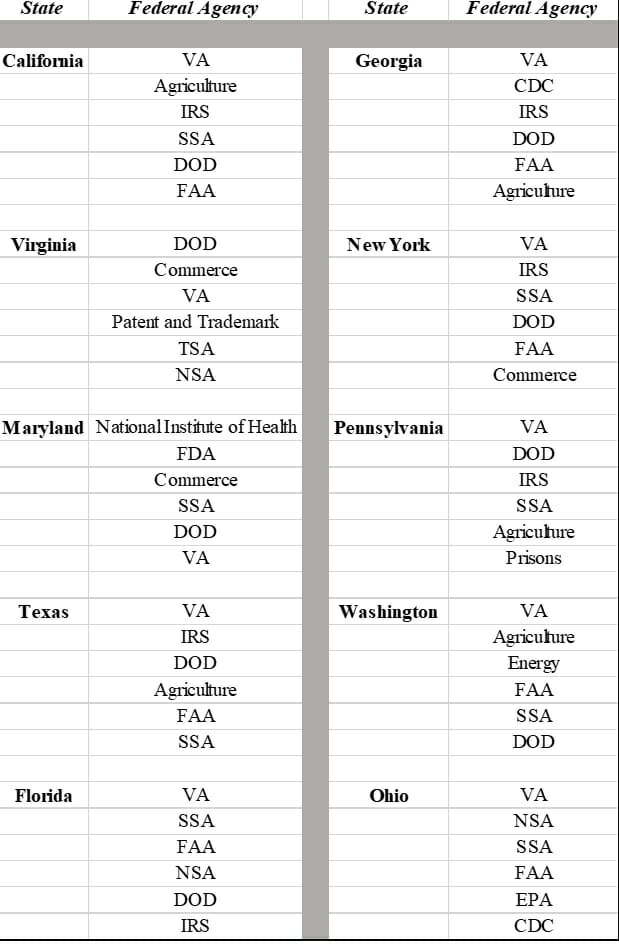The federal government typically employs over 2 million people at any one time and it has held around that figure for the last four decades. In 1978, it employed 2,053,139; as of the end of February 2019, the total employed was 2,050,936. Of this number, about 85% are employed in locations outside of Washington, D.C; 36% of these employees live in rural areas.
In looking at the federal employed numbers by location outside of the Capital area, the ten states with the largest number of federal employees are:
1. California – 172,553
2. Virginia – 155,682
3. Maryland – 149,673
4. Texas – 148,453
5. Florida – 99,212
6. Georgia – 80,042
7. New York – 68,579
8. Pennsylvania – 68,300
9. Washington – 60,250
10. Ohio – 54,483

One question that comes to mind is what do the top ten states have in common that would account for their high number of federal employees? One influencing factor is active duty populations. As shown by the chart below, most of the states with a high active duty numbers also have a high number of federal employees in that state.
Data Source: https://www.governing.com/gov-data/federal-employees-workforce-numbers-by-state.html
Outside of support to the military, what are the primary agencies in each of the top states that that employ the lion’s share of federal employees? With the exception of Ohio, each state listed includes the two military-related agencies – the Department of Veterans Affairs (VA) and the Department of Defense (DoD) in their top six federal-employed agencies. The breakdown by state is:
It is no wonder States vie to get federal agencies in their area. The federal civilian workforce spends approximately $350 million tax dollars annually to support the operations of its various agencies with much of that money staying in the local area. In addition, these are four more benefits of working for the Federal Government versus the private sector:
- Better job security
- More vacation and holidays
- Better health coverage plans
- Better retirement benefits
Because federal jobs are more stable than in the private sector, unemployment tends to fluctuate less. And with much of federal salaries staying in their local communities, these workers have more disposable income to spend locally. These two benefits make for more stable communities in these locales.





